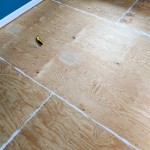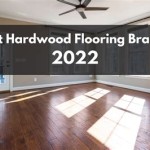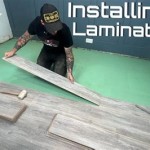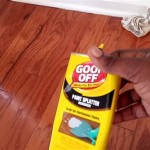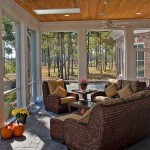Is Chipboard Flooring Good? Evaluating Its Strengths and Weaknesses
Chipboard flooring, also known as particleboard or oriented strand board (OSB), is a widely used material in the construction industry, particularly as a subfloor or for creating a level surface beneath various flooring types. Its affordability and ease of installation make it a tempting option for many homeowners and builders. However, determining whether chipboard flooring is a "good" choice requires a careful evaluation of its strengths, weaknesses, and suitability for specific applications.
This article will examine several key aspects of chipboard flooring, exploring its composition, performance characteristics, and potential drawbacks. The goal is to provide a comprehensive understanding of this material, enabling informed decisions about its use in residential and commercial projects.
Understanding the Composition and Manufacturing of Chipboard
Chipboard is an engineered wood product manufactured from wood chips, shavings, or sawdust that are bonded together with a synthetic resin under heat and pressure. The type of resin used can vary depending on the intended application, with options like urea-formaldehyde (UF), phenol-formaldehyde (PF), and melamine-formaldehyde (MF) resins. While UF resins are commonly used for interior applications due to their lower cost, PF and MF resins offer improved water resistance, making them suitable for more demanding environments.
The manufacturing process involves several steps, starting with the selection and preparation of the wood particles. These particles are dried to a specific moisture content and then mixed with the resin. The mixture is then spread onto a conveyor belt and passed through a press, where it is subjected to high temperature and pressure. This process compresses the wood particles and activates the resin, creating a solid panel. The resulting board is then cooled, trimmed, and sanded to achieve the desired dimensions and surface finish.
The density and thickness of chipboard can vary, affecting its strength and load-bearing capacity. Thicker and denser boards generally offer greater structural integrity and are better suited for applications where heavy loads are expected. Different grades of chipboard are also available, classified based on their performance characteristics, such as moisture resistance and bending strength. Selecting the appropriate grade is crucial for ensuring the longevity and performance of the flooring system.
Evaluating the Advantages of Chipboard Flooring
One of the primary advantages of chipboard flooring is its affordability. Compared to solid wood flooring or plywood, chipboard is significantly less expensive, making it an attractive option for budget-conscious projects. This cost-effectiveness allows for wider use in large-scale construction or renovations where material expenses are a major consideration.
Another benefit is its ease of installation. Chipboard panels are typically produced in large sheets, which can be quickly and efficiently installed over joists or a concrete slab. The uniformity of the panels also contributes to faster installation times, reducing labor costs. Standard woodworking tools can be used to cut and shape the panels, simplifying the process of fitting the flooring to specific room dimensions.
Chipboard also offers a reasonably smooth and even surface, which is ideal for receiving various types of floor coverings, such as carpet, vinyl, or laminate. The consistent surface minimizes imperfections that could telegraph through the finished floor, ensuring a professional and aesthetically pleasing result. In some cases, a thin layer of underlayment may still be required to further smooth the surface or provide additional cushioning and sound insulation.
Furthermore, chipboard can contribute to improved sound insulation in a building. The dense structure of the material helps to dampen sound transmission between floors, creating a quieter and more comfortable living environment. This is particularly beneficial in multi-family dwellings or commercial buildings where noise reduction is a priority.
From an environmental perspective, chipboard can be manufactured using recycled wood materials, making it a more sustainable option compared to virgin wood products. Utilizing waste wood reduces the demand for harvesting new trees and helps to minimize landfill waste. However, it is important to consider the type of resin used in the manufacturing process, as some resins may contain volatile organic compounds (VOCs) that can impact indoor air quality.
Addressing the Drawbacks and Limitations of Chipboard Flooring
Despite its advantages, chipboard flooring is not without its drawbacks. The most significant limitation is its susceptibility to moisture damage. When exposed to water or high humidity, chipboard can swell, warp, and lose its structural integrity. This can lead to uneven flooring surfaces, squeaking, and ultimately, the need for costly repairs or replacement. Therefore, it is crucial to protect chipboard flooring from moisture and avoid using it in areas prone to water exposure, such as bathrooms or kitchens, unless specifically designed for such use.
Another concern is the potential for off-gassing of VOCs from the resins used in the manufacturing process. While advancements in resin technology have reduced VOC emissions, some chipboard products may still release harmful chemicals into the air, particularly in the initial weeks after installation. Proper ventilation and the selection of low-VOC chipboard products can help to mitigate this issue.
The load-bearing capacity of chipboard is generally lower than that of solid wood or plywood. While suitable for residential applications with typical furniture loads, chipboard flooring may not be adequate for heavy commercial use or areas with concentrated loads. Overloading the flooring can lead to deformation and eventual failure.
Chipboard is also more prone to damage from impact than solid wood. Dropping heavy objects or dragging furniture across the surface can cause dents and scratches. While these imperfections may be cosmetic, they can detract from the appearance of the flooring and potentially compromise its structural integrity over time.
Finally, the lifespan of chipboard flooring can be shorter than that of other flooring materials, particularly if it is not properly maintained or if it is exposed to moisture. Regular cleaning and prompt attention to any leaks or spills are essential for extending the lifespan of chipboard flooring.
Considerations for Selecting and Installing Chipboard Flooring
When considering chipboard flooring, proper planning and installation are crucial for maximizing its performance and longevity. The first step is to select the appropriate grade and thickness of chipboard based on the intended application and anticipated loads. For areas with high moisture potential, moisture-resistant chipboard should be used.
Before installation, the subfloor should be thoroughly inspected to ensure that it is level, clean, and dry. Any unevenness or irregularities should be corrected to prevent problems with the finished floor. A vapor barrier may be necessary to protect the chipboard from moisture rising from the subfloor.
The chipboard panels should be installed according to the manufacturer's instructions, using appropriate fasteners and spacing. It is important to leave a small expansion gap around the perimeter of the room to allow for thermal expansion and contraction. This will help to prevent buckling or cracking of the flooring.
After installation, the chipboard flooring should be protected from moisture and heavy loads. Regular cleaning and maintenance are essential for preserving its appearance and structural integrity. Any spills should be cleaned up immediately, and furniture should be protected with pads to prevent scratches and dents.
When using chipboard as a subfloor, the selection of the finished flooring material is also important. Materials that are impermeable to moisture, such as sheet vinyl, can trap moisture beneath the surface and exacerbate moisture-related problems. Breathable flooring materials, such as carpet or laminate with a vapor-permeable underlayment, are generally a better choice.
For areas prone to high moisture, such as bathrooms or kitchens, alternative flooring materials that are more resistant to water damage, such as tile or waterproof vinyl, should be considered. If chipboard is used in these areas, it should be properly sealed and protected from moisture exposure.
Ultimately, the decision of whether or not chipboard flooring is a "good" choice depends on a variety of factors, including budget, intended use, environmental conditions, and personal preferences. By carefully considering the strengths and weaknesses of this material, and by following proper installation and maintenance procedures, it is possible to achieve a satisfactory and cost-effective flooring solution.

How To Lay Chipboard Flooring Checkatrade

How To Lay Chipboard Flooring Roofing Super Help Advice

Chipboard For Floors Blending Durability And Practicality

Chipboard Flooring 2400 X 600 22mm Country Supplies

Which Is Better Plywood Or Chipboard Sub Floor Wood And Beyond Blog

2400 X 600 22mm P5 Flooring Grade Chipboard Moisture Resistant V313 Bs En 312

Caberfloor P5 T G Chipboard Flooring 22mm Coomers

T G Moisture Resistant Chipboard P5 2400 X 600 18mm Rgb

Tongue Groove P5 Flooring Grade Chipboard 2440mm X 600mm 18mm Davies Diy Builders Merchant

18mm T G P5 Chipboard Fsc Mix 2400 X 600mm
See Also
